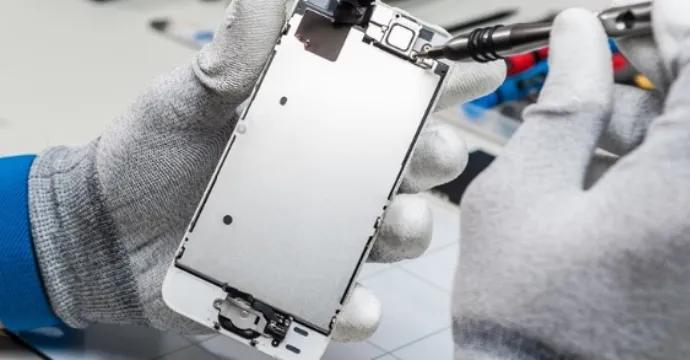
The rise of secondary markets in electronics
5 January 2023
Reading time: 4 min
Monika Collée-Nussbaum is Global Director Communications and CSR at Teleplan International. Teleplan operates in the electronics sector, supporting hardware companies – including IoT, mobile, consumer premises equipment, consumer electronics and enterprise and infrastructure products – through managed logistics, parts management, screening and testing, repair/refurbishment and resale/recycling. Here, Monika explains what has driven the company to adopt a circular economy model, and outlines the factors helping to accelerate the growth of secondary consumer markets for electronic devices.
Teleplan joined the Ellen MacArthur Foundation’s CE100 network in 2016, committing to accelerate the circular economy in the electronics industry. But Teleplan wasn’t always set up to be ‘circular by design’, so what prompted this change in strategy?
In the past, I think if you’d asked people about Teleplan they would have described us as a repair company that fixes hardware. We were very much operating within a linear economy, where the mindset is that once you can't repair a device you throw it away.
About three years ago, we changed our company vision and we became much more focused on enabling circular economy models. This was really driven by the shift we saw in the landscape of our customers in the electronics industry — but also in many other industries.
Firstly, there’s much greater recognition of the value that can be harvested from used devices and the parts which can be reused. The electronics manufacturers are also coming to understand that if we as an industry don't change our behavior, the limited resources we have will become increasingly scarce. For instance, producing mobile phones requires precious metals such as gold; these aren’t limitless resources, so everybody needs to reconsider their approach.
The second big change is that end consumers are increasingly open to buying refurbished devices. Even for mobile phones, which are increasingly seen as a fashion accessory, consumers are exploring second-hand markets where they can buy a used phone which has had a cosmetic refurbishment and has all the functionality, but it costs probably 20%-30%, sometimes even 40% less than a new buy.
And of course, there is the compelling case related to the reduced carbon footprint of refurbished devices versus new devices.
What are the factors making second-hand markets for electronic devices, such as smartphones, more attractive for end consumers?
There are several contributing factors. One is that given the growth of the smartphone market, and the high cost of repairing broken screens and other damage, more insurers are offering an extended warranty to consumers once the manufacturers’ warranty finishes.
Many people have decided it's better to buy an extended warranty through an insurance company, because future damage would be covered. There are similar options to buy extended warranty claims for other devices such as tablets and laptops too. Therefore, you have a growing number of devices circulating and people able to maintain devices for longer.
Then you have the big smartphone brands launching a new model almost on a yearly basis, but the technology updates aren’t so dramatic as they once were. And while consumers are always seeking the latest and greatest model, many are struggling with the price points on new releases. The result is that both the industry and consumers increasingly realize there is value in the old models, providing they’re still working.
There is also a growing infrastructure around secondary markets which facilitates resale. In the Netherlands, for example, there are many companies absorbing secondary devices in the market by developing online trading platforms where you can buy officially good quality refurbished products.
This is leading to substantial expansion of secondary markets. Estimates from Counterpoint Research indicated that the secondary smartphone market was worth roughly $19 billion by the end of 2017, while IDC forecasts the total market value for used devices in 2022 will reach almost $53 billion.
How do you build consumer trust to make them comfortable participating in second-hand markets?
Firstly, there needs to be a quality pledge, with objective and automated testing and grading brought into the process to reassure consumers. We’ve developed our own testing and screening equipment, which is fully automated, so it excludes the human error factor.
In many cases this will be adhering to the standards of the original equipment manufacturer (OEM), or it might involve organizations such as CTIA in the US who set certain standards. Ultimately, the industry needs to reach a position whereby there is a globally accepted standard, so that consumers can be advised that refurbished devices are in line with this.
We have also developed a grading solution which involves the automated screening of the surface of a device, and by using machine learning it assesses the extent of scratches or other damage in order to assign the device as being grade A, B, C or D.
Data security is also critical from the consumer’s perspective. We use data erasing solutions that we’ve developed in-house, which are certified by the international standards body ADISA, as part of providing consumers with that reassurance. Nobody can afford to risk selling a phone with pre-existing data on it.